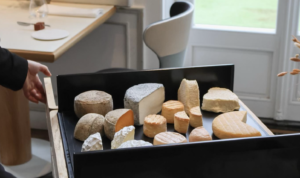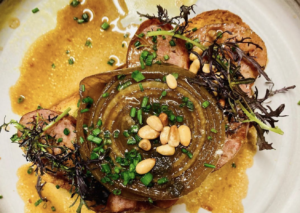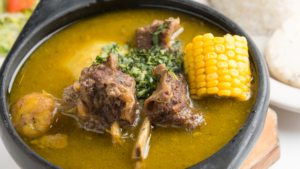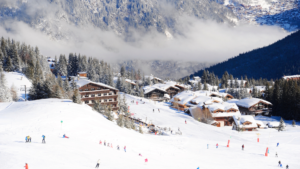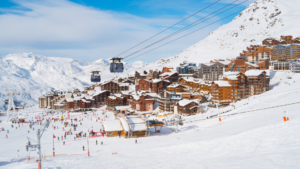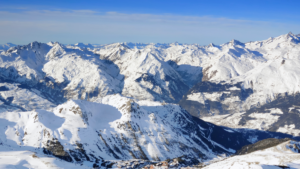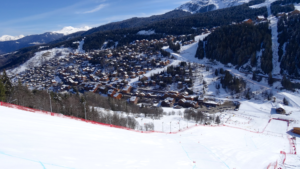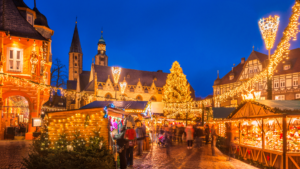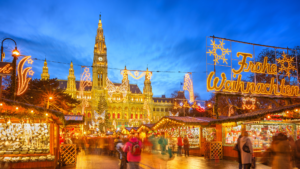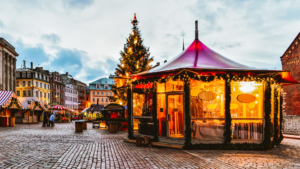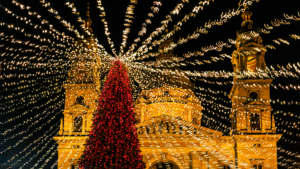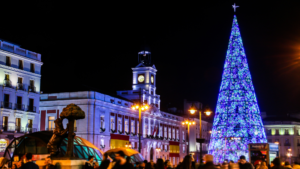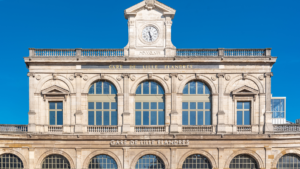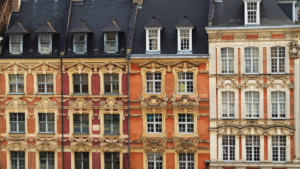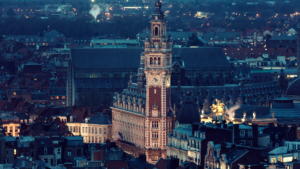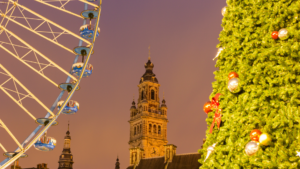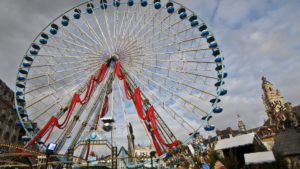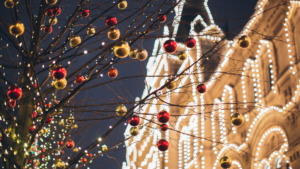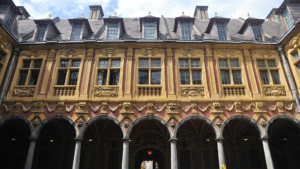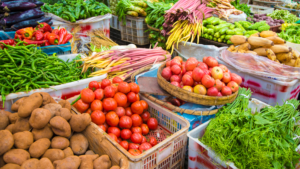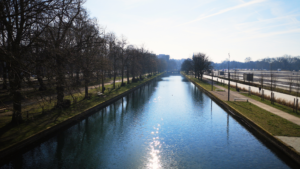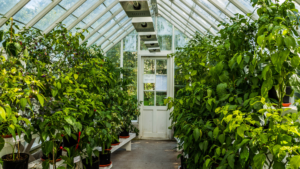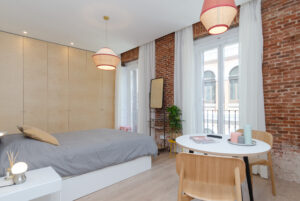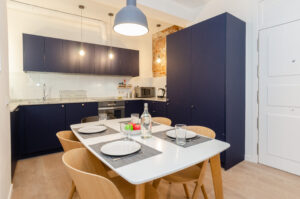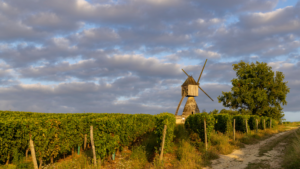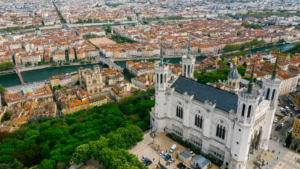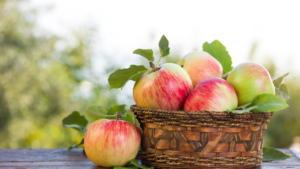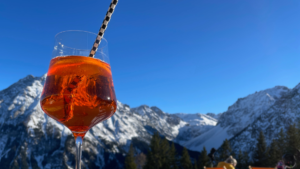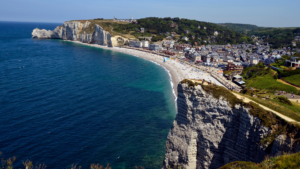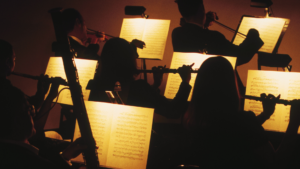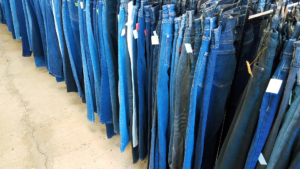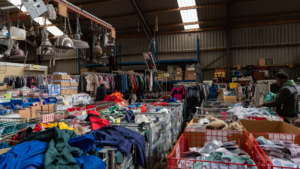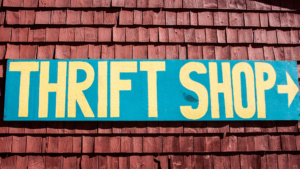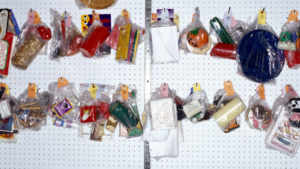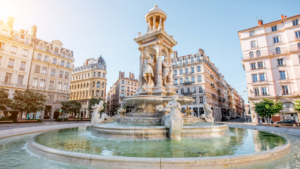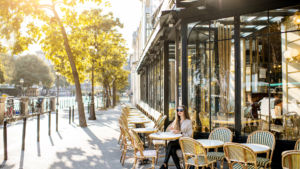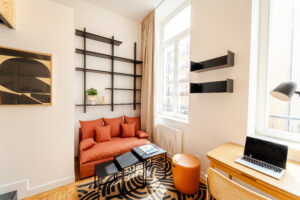Welcome to Lille, a quaint city in the north of France known for its rich history, beautiful architecture, and most importantly, its exquisite cuisine. Whether you’re a first-time visitor or a seasoned traveler, Lille’s culinary scene is sure to entice you.
Lille, often overlooked in favor of Paris or Lyon, holds its own as a culinary hotspot in France. This city offers a unique blend of traditional French cuisine with a twist of Flemish influence. From Michelin-starred restaurants to charming street-side creperies, Lille has something for every palate. Keep reading for a our recommendations on the best restaurants in Lille!
The Best Restaurants in Lille
Bloempot
Bloempot stands out in Lille for its dedication to local produce and Flemish cuisine. The restaurant’s ambiance, with its reclaimed wood and industrial decor, creates a rustic yet modern setting. The menu reflects a commitment to sustainability, offering innovative dishes rooted in regional traditions. This makes Bloempot a prime destination for those seeking an authentic Northern French culinary experience.
The menu at Bloempot surprises, changing with the seasons and the availability of local produce. Known for its eloquence, we definitely recommend making a reservation some time in advance.
Location: 22, rue des Bouchers, 59800 Lille, France
La Table – Clarance Hotel
La Table at Clarance Hotel offers a luxurious dining experience right in the center of Lille’s old town. The restaurant’s menu showcases the best of French haute cuisine, from roasted dumplings to la lotte rôtie. The elegant setting is detailed with fine linens and crystal glassware, adding to the restaurant’s upscale charm. While on the pricier side, La Table promises unforgettable dining.
Location: 32 rue de la Barre, 59000 Lille, France
Ripaille
Ripaille is a cozy bistro known for its classic French cuisine. It’s an ideal spot for both romantic dinners and casual gatherings with friends. At Ripaille, the focus is on serving gourmet and diverse dishes, all prepared on-site with fresh, seasonal ingredients.
The menu is regularly updated to reflect the best of what’s in season, offering something for everyone with vegetarian, fish, and meat options. The restaurant takes pride in supporting local artisans, producers, and breeders, especially with locally sourced bread, cheese, beer and natural wines.
Location: 4 rue des Bouchers, 59000 Lille, France
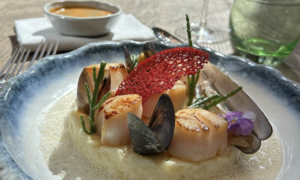
Le Compostelle
Le Compostelle in Lille is a culinary jewel, set within a 15th-century building rich in Templar and pilgrim history. Adorned with French Renaissance decor, it stands as a favorite destination for local and visiting food enthusiasts. The restaurant is also renowned for its exceptional wine selection.
The menu, curated by the chef, features a rotating selection of French culinary masterpieces. Highlights from past menus include steaming oysters, pigeon fillet, roasted hazelnut, and pan-seared foie gras. For dessert, you can choose from delicious options like chocolate namelaka or freshly made macaroons.
Location: 4 rue Saint-Etienne, 59800 Lille, France
Estaminet Au Vieux De La Vieille
Estaminet Au Vieux De La Vieille in Lille is more than a restaurant; it’s a place where culture and dining converge. It has a lively café environment, allowing guests to enjoy draft beer and play local games. Authentic cultural decor embellishes the interior, reflecting the area’s history. This spot is perfect for both locals and visitors wanting to experience Lille’s cultural and culinary essence.
Their menu is a showcase of regional flavors and dishes. A few favorites include:
- “Soupe de chicons saveurs en’or” – a creamy soup made with endives, carrots, and onions.
- “Tatin de boudin noir aux pommes” – an apple tart with black pudding
- “Carbonnades Flamandes” – Small pieces of beef cooked with beer, gingerbread and brown sugar
Location: 2-4 Rue des Vieux Murs, 59000 Lille, France
French Haute Cuisine
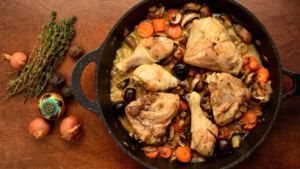
French haute cuisine is celebrated for its meticulous preparation and presentation, showcasing the depth and diversity of French culinary expertise. It is characterized by its emphasis on quality ingredients, elegant plating, and complex techniques, reflecting a rich gastronomic history.
Here are five must-try dishes found in French haute cuisine:
- Coq au Vin: a classic French stew made with chicken, slowly cooked in red wine, usually with mushrooms, bacon, and sometimes garlic. The wine adds a rich depth of flavor to the tender chicken, making it a hearty and flavorful.
- Bouillabaisse: Originating from Marseille, this fish stew combines various kinds of fresh fish and shellfish with a rich broth flavored with garlic, tomatoes, saffron, and a variety of herbs. It’s often served with a rouille sauce and crusty bread.
- Ratatouille: This vegetable stew from Provence features eggplant, zucchini, bell peppers, onion, and tomatoes. Each vegetable is cooked separately and then layered together, allowing each to maintain its distinct flavor.
- Duck à l’Orange: A sophisticated dish featuring roast duck served with an orange sauce. The sauce, typically made with orange juice, sugar, vinegar, and stock, offers a perfect balance of sweetness and acidity, complementing the rich duck meat.
- Tarte Tatin: A famous upside-down pastry in which the apples are caramelized in butter and sugar before the tart is baked. This dessert is known for its caramelized top, created when the tart is inverted after baking.
Want to read more about Lille?
- Explore the Lille Christmas Market!
- Is Lille Worth Visiting?
- The best things to do in Lille, France
- The Top 5 Vegan Restaurants in Lille
- Must Do’s if you Live in Lille, France
Photo Credits:
- Cover Photo: Canva Free Media License
- Photo 1: Bloempot Instagram – see original post
- Photo 2: La Table Instagram – see original post
- Photo 3: Ripaille Instagram – see original post
- Photo 4: Le Compostelle Instagram – see original post
- Photo 5-6: Canva Free Media License

